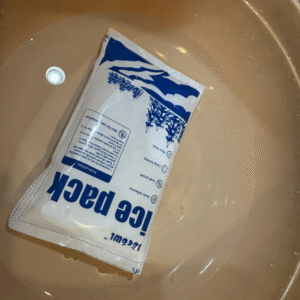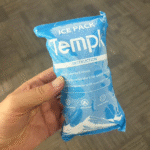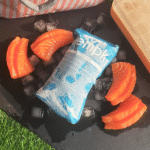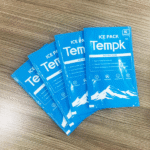Quanto tempo dura o gelo seco em um pacote?
Gelo seco é um recurso crucial usado para manter itens sensíveis à temperatura fria, como comida, produtos farmacêuticos, e suprimentos médicos. No entanto, understanding how long it will last inside a package is vital to ensure the items remain at the correct temperature during shipping and storage. Whether you’re dealing with perishables or shipping medical supplies, knowing how long dry ice stays effective can prevent losses and ensure the goods arrive in optimal condition. This comprehensive guide explores the factors that impact the longevity of dry ice in packaging, practical tips for prolonging its lifespan, and the latest trends in dry ice usage in 2025.
-
How long does dry ice last in a package? Learn the general lifespan of dry ice under different conditions.
-
What factors affect dry ice’s longevity? Explore key aspects like the type of packaging, isolamento, e condições ambientais.
-
How to maximize dry ice’s cooling effect? Discover practical strategies to extend the effectiveness of dry ice in shipments.
Quanto tempo dura o gelo seco em um pacote?
The duration that dry ice remains effective depends on several factors. Em média, dry ice can last between 18 para 24 hours in a standard package. No entanto, it can last longer if high-quality insulation and the right amount of dry ice are used. Factors such as packaging material, external temperature, and airflow all play crucial roles in determining the lifespan of dry ice.
What Affects the Duration of Dry Ice in a Package?
1. Packaging Material
The type of container used for packing dry ice is one of the most significant factors influencing its duration. Insulated packaging materials such as Styrofoam, espuma de poliuretano, or vacuum insulated panels (VIPs) slow down the sublimation process, helping dry ice last longer.
2. Quantidade de gelo seco
The more dry ice used, the longer it will last. Larger amounts of dry ice take longer to sublimate because they have more mass. For longer shipping durations, increasing the amount of dry ice can ensure that perishable goods stay frozen.
3. External Temperature
Dry ice sublimates much faster when exposed to higher temperatures. Por exemplo, shipments to warmer climates or during the summer months will see faster sublimation. It’s crucial to account for temperature fluctuations during transportation to avoid premature sublimation.
4. Size and Shape of Dry Ice
The larger the blocks of dry ice, the slower the sublimation rate. Smaller pellets or chunks have more surface area exposed to the air, which causes them to evaporate faster. If you need dry ice to last longer, opt for larger blocks.
5. Airflow and Ventilation
Airflow accelerates sublimation. Portanto, it’s essential to store dry ice in a container with proper ventilation to allow the gas to escape. No entanto, over-ventilating can also reduce cooling efficiency, so balancing airflow and insulation is crucial.
How Long Can You Expect Dry Ice to Last in a Package?
Here’s a general guideline for how long dry ice lasts depending on the quantity and packaging:
-
1-2 libras de gelo seco: 6-12 horas
-
5 libras de gelo seco: 24-36 horas
-
10 libras de gelo seco: Até 48 hours in well-insulated packaging
For longer trips or shipments, it’s advisable to increase the amount of dry ice and enhance the packaging insulation.
How to Maximize the Lifespan of Dry Ice?
Maximizing the effectiveness of dry ice ensures that your temperature-sensitive items remain cold for the duration of transit. Here are several tips:
1. Use Proper Insulation Materials
Styrofoam coolers are a popular option because they provide excellent insulation. No entanto, newer materials such as vacuum insulated panels (VIPs) offer superior insulation, helping to keep dry ice cold for much longer.
2. Pack Dry Ice Properly
Ensure that dry ice is securely packed within the container. Para melhores resultados, place dry ice at the bottom of the package to allow the cold to settle at the base, keeping the contents cool. Avoid placing it directly on items that are sensitive to extreme cold, as it could damage them.
3. Minimize Airflow
While you need ventilation to allow the carbon dioxide gas to escape, try to minimize excess airflow. A tightly sealed package with a small vent can significantly reduce the rate of sublimation. Over-pressurizing the container can lead to rupture or leakage.
4. Use Larger Blocks of Dry Ice
Larger blocks of dry ice have a smaller surface area relative to their volume, which results in slower sublimation. Sempre que possível, choose larger blocks over smaller pellets.
How Much Dry Ice Should You Use?
The quantity of dry ice you need depends on several factors, including the duration of transport, the type of shipment, e a temperatura ambiente. Here’s a breakdown of general recommendations:
-
Shipping Perishables: Usar 5-10 lbs of dry ice per 24 horas de envio.
-
Event Use: Planejar 2-3 lbs per person for 2-4 hours of cooling.
-
Transporte médico: Para 24-48 horas de envio, você vai precisar 10-15 libras de gelo seco.
For larger shipments, you may need to increase the amount of dry ice or use multiple containers to distribute the cooling evenly.
2025 Trends in Dry Ice Packaging and Storage
Latest Advances in Insulation Technology
2025 has seen a significant leap forward in the insulation technologies used for shipping dry ice. Painéis isolados a vácuo (VIPs) are now more affordable and offer superior performance, allowing dry ice to stay effective for extended periods without increasing the weight of the shipment. This advancement is especially useful for sensitive medical shipments that require precise temperature control over long distances.
Sustainable Alternatives to Dry Ice
With growing concern over environmental impact, alternatives to dry ice are being explored. Materiais de mudança de fase (PCMs) are gaining traction as eco-friendly substitutes. These materials store and release thermal energy, making them ideal for use in cold chain logistics without the carbon footprint associated with traditional dry ice.
Smart Cold Chain Technology
The use of IoT (Internet das coisas) sensors for real-time tracking of dry ice during shipping is on the rise. These sensors provide valuable data about temperature and humidity, helping shippers optimize packaging and ensure the cold chain remains intact.
Perguntas frequentes
Quanto tempo dura o gelo seco para o envio?
Dry ice typically lasts between 18-24 horas, depending on the packaging and environmental conditions.
Can dry ice be used for long-term storage?
Dry ice is suitable for short-term cooling but not for long-term storage. It sublimates quickly, making it ideal for up to 72 horas de transporte.
How do I dispose of dry ice safely?
Deixe o gelo seco sublimar em uma área bem ventilada. Never dispose of dry ice in an airtight container.
Conclusão
To ensure that dry ice is used effectively during shipping and storage, it’s essential to consider factors such as insulation quality, quantidade de gelo seco, e temperatura externa. By following best practices and keeping up with the latest trends in dry ice packaging, you can guarantee that your temperature-sensitive items will remain cold for the duration of their journey.
Dicas acionáveis
-
For Shipping: Always use high-quality insulation and calculate the correct amount of dry ice for the trip.
-
For Events: Use larger blocks of dry ice for longer-lasting effects and cooling.
-
For Medical Transport: Ensure high-quality insulation and proper dry ice amounts for extended shipments.
Sobre Tempk
Tempk specializes in providing advanced cold chain logistics solutions for shipping temperature-sensitive goods. From pharmaceuticals to perishables, we ensure that your products are transported safely and efficiently. With our high-performance packaging and expert advice, your shipments will stay fresh throughout their journey.
For more information or to place an order, Entre em contato conosco hoje!
























